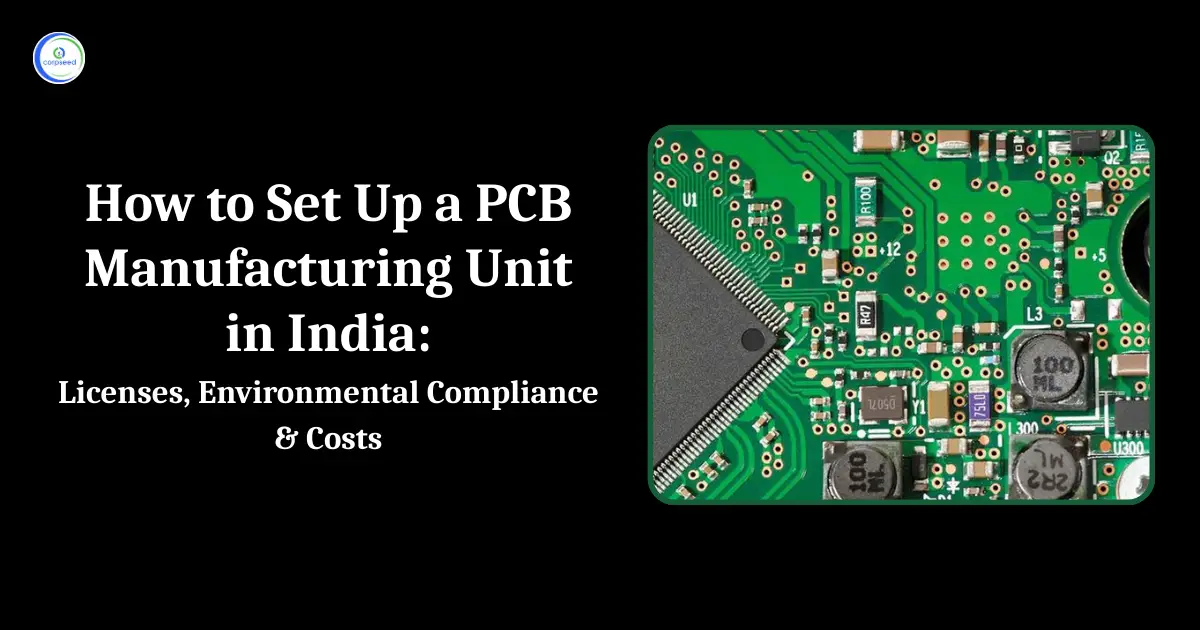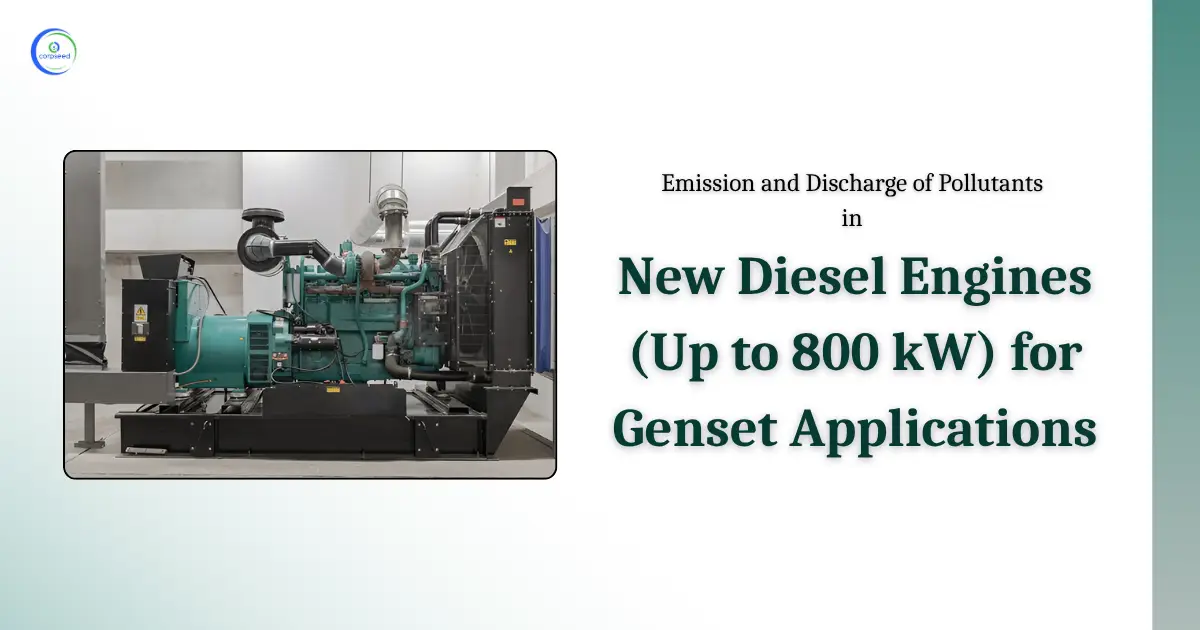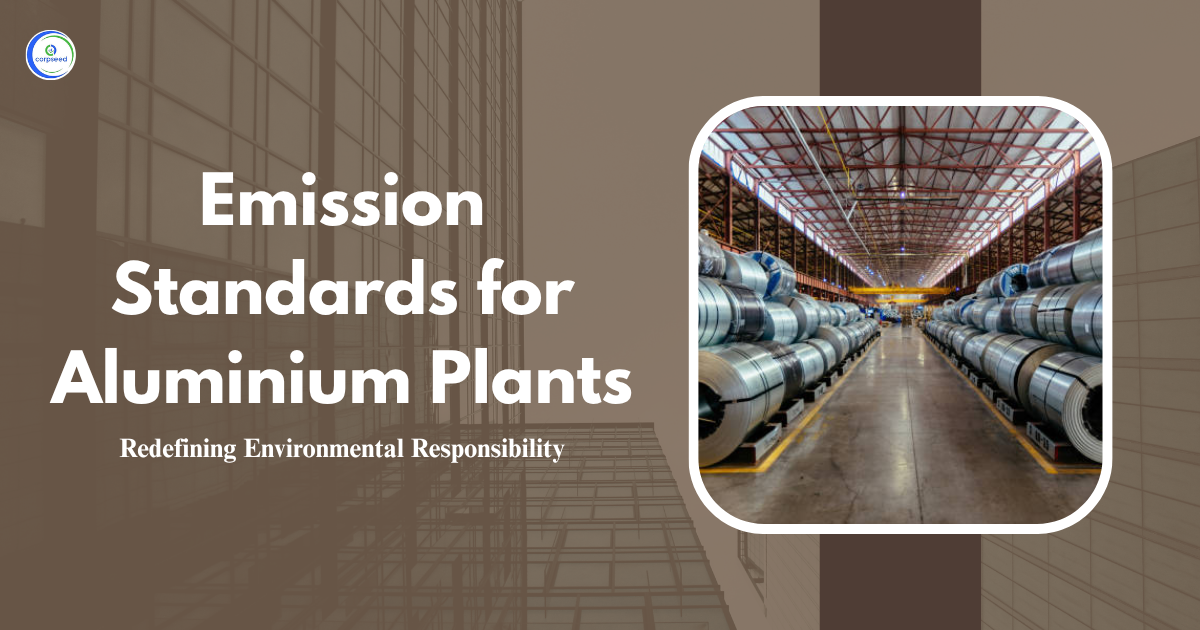Coastal waters and marine outfalls are important ecosystems supporting various aquatic life and allowing important human activities such as fishing, tourism and industry. To safeguard these sensitive environments, India has established Standards for Emission or Discharge of Environmental Pollutants for Coastal Waters Marine Outfalls. These standards limit pollution to maintain water quality, protect marine biodiversity, protect public health, and support economic activities dependent on clean and strong coastal environments.
Table of Contents
- Classification of Coastal Waters Based on Designated Best Use
- Water Quality Standards for Coastal Waters Marine Outfalls (For Salt pans, Shell fishing, Mariculture and Ecologically Sensitive Zone)
- Ensuring Safe Bathing, Water Sports, and Commercial Fishing Waters
- Industrial Cooling, Non-Contact Recreation, and Aesthetic Uses
- Harbour Water Standards
- Monitoring and Reporting
- Conclusion
Classification of Coastal Waters Based on Designated Best Use
India classifies its coastal waters into five categories on the basis of selected best use a regulatory approach that identifies the optimal level of water quality required to conserve important activities in each coastal segment. This classification guides permissible pollutant emission levels and ensures effective protection customized to each zone’s ecological and economic significance.
The five coastal water categories include:
- Salt pans, shell fishing, mariculture, and ecologically sensitive zones
- Bathing, contact water sports, and commercial fishing
- Industrial cooling, non-contact recreation, and aesthetics
- Harbour waters
- Navigation and controlled waste disposal
--------------Blog Contact Form-------------
Water Quality Standards for Coastal Waters Marine Outfalls (For Salt pans, Shell fishing, Mariculture and Ecologically Sensitive Zone)
Areas designated for salt vessels, marine culture, shell fishing, and environmentally sensitive areas need highest water quality standards. These waters maintain a pH range between 6.5 and 8.5 and dissolved oxygen levels of at least 5 mg/l or 60% saturation. The discharge must be free from obvious discoloration and offensive odours caused by harmful chemicals such as phenol and benzene, which adversely affect aquatic life and seafood and salt production. Floating agents should be non-invasive, with surfactants limited to 1.0 mg/l to prevent foaming. The suspended solids content from sewage or industrial waste must be minimal to avoid damaging these important uses. Oil and grease are limited to a maximum of 0.1 mg/l, which protects the sensitive fish eggs and larvae. Heavy metals such as mercury, lead, and cadmium are strictly restricted due to their bio accumulating properties and potential health risks.
| S. No. | Parameter | Standards | Rationale/Remarks |
| 1. | pH range | 6.5-8.5 | General broad range, conductive for propagation of aquatic lives is given. Value largely dependent upon soil-water integration. |
| 2. | Dissolved Oxygen | 5.0 mg/l or 60 per cent saturation value whichever is higher | Not less than 3.5 mg/l at any time of the year for protection of aquatic lives. |
| 3. | Colour and Odour | No noticeable colour or offensive odour. | Specially caused by chemical compound like creosols, phenols, naphtha pyridine benzene, toluene etc. causing visible colouration of salt crystal and fainting fish flesh. |
| 4. | Floating Matters | Nothing obnoxious or detrimental for use purpose | Surfactants should not exceed an upper limit of 1.0 mg/l and the concentratic not to cause any visible foam. |
| 5. | Suspended Solids | None from sewage or industrial waste origin | Settle able inert matters not in such concentration that would impair any usages specially assigned to this class. |
| 6. | Oil and Grease (including Petroleum Products) | 0.1 mg/l | Concentration should not exceed 0.1 mg/l as because it has effect on fish eggs and larvae. |
| 7. | Heavy Metals: Mercury (as Hg) Lead (as Pb) Cadmium (as Cd) | 0.001 mg/l 0.001 mg/l 0.01 mg/l] |
Values depend on: (i) Concentration in salt, fish and shell fish. (ii) Average per capita consumption per day. (iii)Minimum ingestion rate that induces symptoms of resulting diseases. |
Ensuring Safe Bathing, Water Sports, and Commercial Fishing Waters
For water used in direct human contact activities such as bathing and commercial fishing, public health protection is supreme. The pH is maintained between 6.5 and 8.5, with dissolved oxygen not less than 4 mg/l or 50% saturation. Discharge must not cause evident pollution or offensive odours. Water turbidity is limited to 30 NTU (Nephelometric Turbidity Units) to maintain cleanliness, and faecal coliform bacteria levels are tightly controlled to ensure sanitary safety. The biochemical oxygen demand (BOD) is limited to 3 mg/l, protecting the aesthetic and sanitary quality of the water. These standards ensure that the water is safe for recreational use and sustainable fisheries.
| S. No. | Parameter | Standards | Rationale/Remarks |
| 1. | pH range | 6.5-8.5 | Range does not cause skin or eye irritation and is also conducive for propagation of aquatic lives. |
| 2. | Dissolved Oxygen | 4.0 mg/l or 50 per cent saturation value whichever is higher. | Not less than 3.5 mg/l at any time for protection of aquatic lives. |
| 3. | Colour and Odour | No noticeable colour or offensive odour | Specially caused by chemical compound like creosols phenols, naptha, benzene, pyridine toluene etc. causing visible colouration of water and tainting of and odour in fish flesh. |
| 4. | Floating Matters | Nothing obnoxious or detrimental for use purposes. | None in such concentration that would impair usages specially assigned to this class. |
| 5. | Turbidity | 30 NTU (Nephelo Turbidity Unit) | Measured at 0.9 depth |
| 6. | Faecal Coliform | 100/100 ml(MPN) | The average value not exceeding 200/100 ml in 20 per cent of samples in the year and in 3 consecutive samples in monsoon months. |
| 7. | Biochemical Oxygen Demand (BOD) (3 days at 27oC) | 3 mg/l | Restricted for bathing (aesthetic quality of water). Also prescribed by IS : 2296- 1974. |
Industrial Cooling, Non-Contact Recreation, and Aesthetic Uses
Coastal waters designated for industrial cooling and non- contact recreation need water quality standards that balance environmental safety with industrial utility. These waters uphold a pH between 6.5 and 8.5 and dissolved oxygen of at least 3 mg/l or 40% saturation. Bacterial contamination limits are lenient in comparison to contact-use water but are still regulated. To ensure clarity, turbidity remains controlled below 30 NTU, whereas the amount of dissolved iron and manganese is concentrations are planned to avoid scaling in industrial cooling systems.
| S. No. | Parameter | Standards | Rationale/Remarks |
| 1. | pH range | 6.5-8.5 | The range is conducive for propagation of aquatic species and restoring natural system. |
| 2. | Dissolved Oxygen | 3.0 mg/l or 40 per cent saturation value whichever is higher. | To protect aquatic lives. |
| 3. | Colour and Odour | No noticeable colour or offensive odour | None in such concentration that would impair usages specifically assigned to this class. |
| 4. | Floating Matters | No visible, obnoxious floating debris, oil slick, scum. | As in (3) above. |
| 5. | Faecal Coliform | 500/100 ml(MPN) | Not exceeding 1000/100 ml in 20 percent of samples in the year and in 3 consecutive samples in monsoon months. |
| 6. | Turbidity | 30 NTU | Reasonably clear water for Recreation Aesthetic appreciation and Industrial cooling purposes. |
| 7. | Dissolved Iron (as Fe) | 0.5 mg/l or less | It is desirable to have the collective concentration dissolved Fe and Mn less or equal to 0.5 mg/l to avoid scaling effect. |
| 8. | Dissolved Manganese (as Mn) | 0.5 mg/l or less |
Harbour Water Standards
The harbour experiences heavy marine vessel traffic and infrastructure use, which demand standards to mitigate the effects of corrosion and pollution. pH is maintained between 6.0 and 9.0, with dissolved oxygen above 3 mg/l or 40% saturation. Visible colours and offensive odours are not allowed. Oils, greases, and floating substances are allowed up to 10 mg per to avoid blockage of marine equipment. Bacterial pollution and BOD limits are suggested to avoid pollution growth, ensure operational efficiency and environmental protection.
| S. No. | Parameter | Standards | Rationale/Remarks |
| 1. | pH range | 6.0-9.0 | To minimize corrosive and scaling effect. |
| 2. | Dissolved Oxygen | 3.0 mg/l or 40 per cent saturation value whichever is higher. | Considering bio-degradation of oil and inhibition to oxygen production thorugh photosynthesis. |
| 3. | Colour and Odour | No visible colour or offensive odour | None from reactive chemicals which may corrode paints/ metallic surfaces. |
| 4. | Floating materials, Oil, grease and scum (including Petroleum products) | 10 mg/l | Floating matter should be free from excessive living organisms which may clog or coat operative parts of marine vessels/equipment. |
| 5. | Faecal Coliform | 500/100 ml(MPN) | Not exceeding 1000/100 ml in 20 per cent of samples in the year and in 3 consecutive samples in monsoon months. |
| 6. | Biochemical Oxygen Demand (3 days at 27oC) | 5mg/l | To maintain water relatively free from pollution caused by sewage and other decomposable wastes. |
Navigation and Controlled Waste Disposal Zones
Navigation and controlled waste disposal zones allow limited pollutant emissions but implement stringent water quality controls to safeguard aquatic life and navigation. This water maintain a pH range of 6.0 to 9.0, with a dissolved oxygen concentration not less than 3 mg/l or 40% saturation. The emissions are regulated to prevent impairing designated uses. Only small amounts of grease from litter, solid waste, oil, and treated waste are allowed. Faecal coliform levels are monitored to protect marine ecosystems and human health.
| S.No. | Parameter | Standards | Rationale/Remarks |
| 1. | pH range | 6.0-9.0 | As specified by New England Interstate Water Pollution Control Commission. |
| 2. | Dissolved Oxygen | 3.0 mg/l or 40 per cent saturation value whichever is higher. | To protect aquatic lives |
| 3. | Colour and Odour | None in such concentrations that would impair any usages specifically assigned to this class. | As in (i) above. |
| 4. | Sludge deposits, Solid refuse floating solids, oil grease and scum. | None except for such small amount that may result from discharge of appropriately treated sewage and or industrial waste effluents. | As in (i) above. |
| 5. | Faecal Coliform | 500/100 ml (MPN) | Not exceeding 1000/100 ml in 20 per cent of samples in the year and in 3 consecutive samples in monsoon months. |
Monitoring and Reporting
To ensure compliance with pollutant emissions or emission standards, regular monitoring and reporting is mandatory for industries and municipalities operating close to coastal waters. Monitoring includes periodic sampling and analysis of water quality parameters such as pH, dissolved oxygen, heavy metals, bacterial contamination, and other pollutants. Reporting to regulatory authorities guarantees transparency and timely corrective action if standards are violated. Continuous monitoring helps in early detection of pollution events and helps in enforcing environmental regulations, thus protecting coastal ecosystems and public health.
Conclusion
The standards for emission or discharge of environmental pollutants for coastal waters marine outfalls are essential to safeguard the abundant coastal ecosystems of India. By categorizing coastal waters on the basis of their designated best use, India ensures that pollutant emissions are regulated to safeguard aquatic life, public health, and economic activities dependent on marine resources.
Strict compliance with these water quality standards by industries and municipalities operating close to coastal areas is essential to maintaining marine environmental health. Through operative wastewater treatment, emission control and ongoing monitoring, India aims to balance industrial growth with sustainable conservation of its coastal waters.
This portion of the site is for informational purposes only. The content is not legal advice. The statements and opinions are the expression of author, not corpseed, and have not been evaluated by corpseed for accuracy, completeness, or changes in the law.
BOOK A FREE CONSULTATION
Get help from an experienced legal adviser. Schedule your consultation at a time that works for you and it's absolutely FREE.
.webp)






_Corpseed.webp)
.webp)
